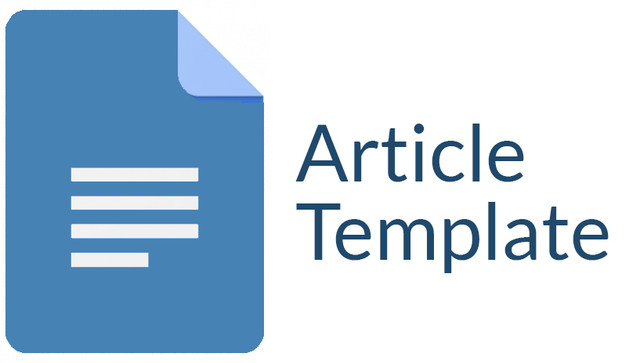PENGEMBANGAN MEDIA SMART BOX DALAM MENINGKATKAN KEMAMPUAN KOGNITIF ANAK USIA 5-6 TAHUN
DOI:
https://doi.org/10.25273/jcare.v8i2.8556Keywords:
smart box media, cognitive children aged 5-6 years, media smart box, kognitif anak usia 5-6 tahunAbstract
Abstract This study aims to develop smart box media and improve cognitive abilities of children aged 5-6 years. This research and development refers to the steps developed by Borg & Gall. The development design is simplified into 6 steps, namely: (1) research and information gathering, (2) planning, (3) developing the initial form of the product, (4) limited trials, (5) product revision, (6) field trials. The subjects of the field trial were 15 children. Data collection uses the validity of expert judgment and observation sheets. The data analysis technique uses a scale of five. The results showed that the smart box media from the material and appearance according to the expert (expert judgment) was in the "good" category and the media display was in the "very good" category. There is a difference in the values before and after the smart box media results, namely 41% began to develop before using the smart box media and after using the results obtained 80.4% developed very well. These results indicate that smart box media can improve children's cognitive development.
Abstrak Penelitian ini bertujuan mengembangkan media smart box dan meningkatkan kemampuan kognitif anak usia 5-6 tahun. Penelitian dan pengembangan ini mengacu pada langkah yang dikembangkan oleh Borg & Gall. Desain pengembangan disederhanakan menjadi 6 langkah, yaitu: (1) penelitian dan pengumbulan informasi, (2) perencanaan, (3) mengembangkan bentuk awal produk, (4) ujicoba terbatas, (5) revisi produk, (6) ujicoba lapangan. Subjek uji coba lapangan adalah 15 orang anak. Pengumpulan data menggunakan validitas expert judgment dan lembar observasi. Teknik analisis data menggunakan skala lima. Hasil penelitian menunjukkan media smart box dari materi dan tampilan menurut ahli (expert judgment) berkategori “baik†dan tampilan media berkategori “sangat baikâ€. Terdapat perbedaan nilai sebelum dan sesudah media smart box hasil yaitu 41% mulai berkembang sebelum menggunakan media smart box dan sesudah menggunakan diperoleh hasil 80,4% berkembang sangat baik. Hasil tersebut menunjukkan bahwa media smart box dapat meningkatkan perkembangan kognitif anak.Â
Downloads
References
Borg, W. R. & Gall, M. D. (1983).
Educational Research. New York
& London: Longman
Cartwright, B, Kelly. 2001. Cognitive
Developmental Theory and
Spiritual Development. Journal of
Adult Development, Vol. 8, No. 4,
Clark, E, Richard. 1994. Media will never
influence learning. Vol. 42 No. 2
Khadijah. 2016. Perkembangan Kognitif
Anak Usia Dini. Perdana Mulya
Sarana
Muhamad Busro Karim. dkk. 2014.
Meningkatkan Kemampuan
Kognitif Pada Anak Usia Dini
Melalui Permainan Edukatif. Jurnal
Pg Paud Trunojoyo. Volume 1
Nomer 2, Hal 76-146.
Permendikbud Nomer 137. Tahun 2014
Pasal 1 Ayat 2 Tentang Standar
Nasional Paud.
Robert Kozma. 1991. Learning with
Media. Vol. 61, No. 2
Widoyoko, Eko Putro. 2011 Evaluasi
Program Pembelajaran Panduan
Praktis Bagi Pendidik Dan Calon
Pendidik, Yogyakarta: Pustaka
Pelajar.
Downloads
Published
Issue
Section
License

JURNAL CARE by E-JOURNAL UNIVERSITAS PGRI MADIUN is licensed under a Creative Commons Attribution-NonCommercial-ShareAlike 4.0 International License.
Author who publish with this journal agree to the following terms:
- Author retain copyright and grant the journal of first publication with the work simultaneously licenced under Creative Commons Atribution Licence that allows other to share the work with an acknowledgement of the work's authorship and initial publication in this journal.
- Author are able to enter into separate, additional contractual arrangements for the non-exclusive distribution of the journal's published version of the work with an acknowledgement of its initial publication in this journal.
- Author are permitted and encouraged to post their work online prior to and during the submission process, as it can lead to productive exchanges, as well as earlier and greater citation od published work.




